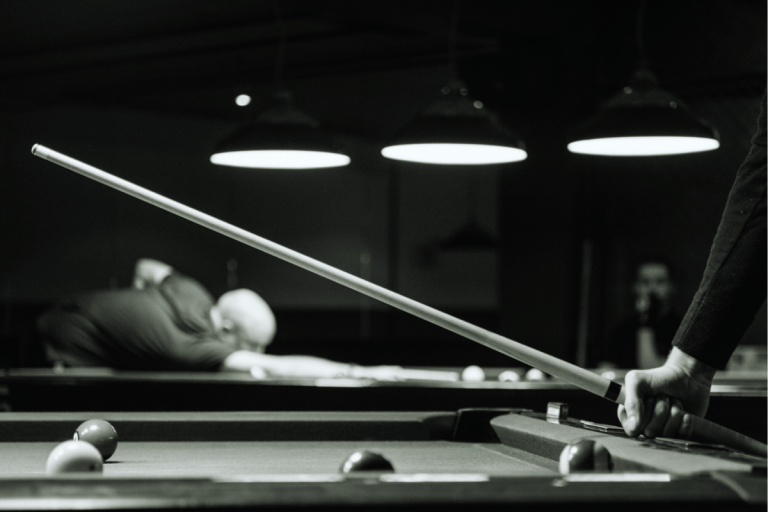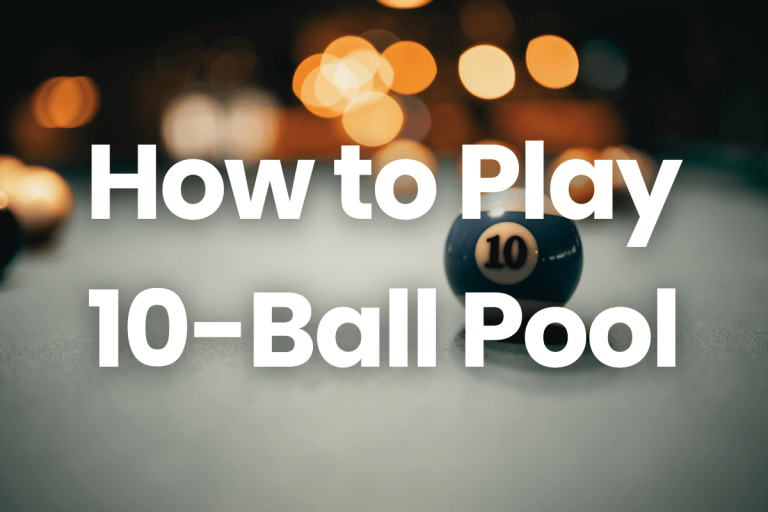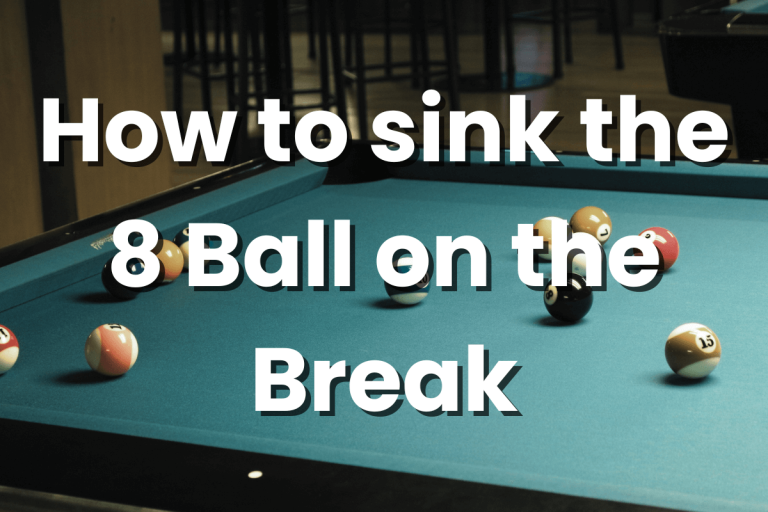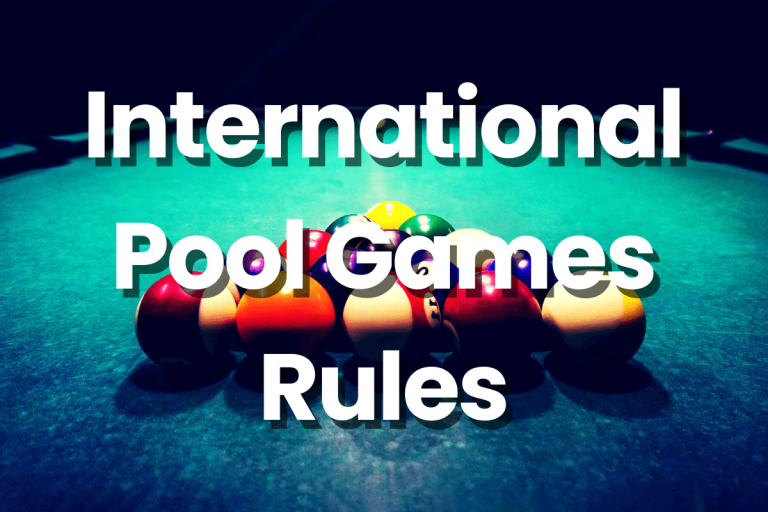Winning Tips: How to Play Pool with 3 Players – A Quick Guide
Engaging in a game of pool becomes a unique adventure when you’re playing with three players. This scenario transforms the typical duel-like nature of the pool into a triad of strategy, skill, and subtle competition. In a three-player setup, every shot and tactical decision affects not just one, but two rivals, adding layers of complexity to each move. It’s vital to grasp the distinct rules and strategies specific to this format. This guide focuses on mastering “how to play pool with 3 players”, ensuring that you’re equipped not only to participate but to excel in this intriguing variation of the classic game.
Understanding the Basics for how to play pool with 3 players
At its core, a standard game of pool involves a blend of skill, strategy, and precision, where players aim to pocket balls in a designated order or pattern. When adapting this classic game for three players, the fundamental rules remain the same, but the approach and tactics shift significantly. Each player must navigate not just the table, but also the additional competitor, adding an intriguing layer of complexity.
In terms of equipment, the essentials remain unchanged. You’ll need a standard pool table, which typically measures 9 by 4.5 feet. The table should be equipped with six pockets, one at each corner and two in the middle of the longer sides. A set of pool balls, including one cue ball and fifteen object balls, is essential. Each player will need a cue stick, preferably one that’s well-balanced and suits their grip and playing style.
This three-player variation doesn’t require any special or additional equipment beyond the standard pool setup. However, it demands a more strategic mindset and an ability to adapt to the evolving dynamics of the game as each player takes their turn.
Setting Up the Game
Setting up a game of pool for three players involves a few key steps to ensure fair play and an enjoyable experience for everyone involved. The initial setup is crucial in laying the groundwork for a competitive and engaging game.
Racking the Balls
- Traditional Triangle Rack: Begin by placing the balls in a standard triangle rack at the foot of the table. The apex ball should be on the foot spot.
- Random Placement: Unlike some pool games where specific balls are placed in certain positions, in the three-player pool, the balls can be placed randomly within the rack. This adds an element of unpredictability to the game.
- Cue Ball Positioning: Each player will use the cue ball for their shots, which start from behind the head string for the opening break.
Determining the Order of Play
- Drawing Lots: A fair way to decide who breaks is by drawing lots. This could be done by each player picking a numbered ball from the rack.
- Rotation System: After the initial break, the order of play rotates in a clockwise direction. This ensures each player gets an equal opportunity to control the table.
- Continuing the Game: The order of play is crucial as it can affect strategies. Players should pay attention to their position in the rotation to plan their shots accordingly.
Specific Rules for 3-Player Pool
In a three-player pool, certain rules are adapted specifically to accommodate the third player, ensuring a balanced and competitive game. Understanding these specific rules is crucial for a fair and enjoyable experience.
Allocation of Balls
- Dividing the Balls: The set of fifteen object balls is divided into three groups, each assigned to a player. This can be stripes, solids, and a combination of the remaining balls.
- Fair Distribution: Care is taken to ensure each group of balls is roughly equal in terms of position and potential for play, avoiding any unfair advantage.
Break Shot Rules
- Initial Break: The player determined by the drawing of lots or another method performs the initial break. A successful break should scatter the balls without committing a foul.
- Break Rotation: After the first game, the break shot rotates among the players. This ensures each player has an equal opportunity to break, which can be a significant advantage.
Rotation During Play
- Turn Order: Players take turns in a clockwise rotation, maintaining the order established after the break. This rotation continues throughout the game.
- Fouls and Penalties: Standard pool fouls apply, such as failing to hit your own group of balls first or pocketing the cue ball. Fouls result in the next player getting the advantage of the shot.
- Continuity of Play: A player continues their turn as long as they legally pocket a ball of their group. The turn ends when they fail to pocket a ball or commit a foul.
Scoring and Winning
In a three-player pool, the scoring system and winning conditions differ slightly from the traditional two-player game, adding an intriguing layer of strategy and competition. Understanding these aspects is key to not just playing but excelling in the game.
Scoring System
- Point-Based Approach: Unlike classic pool games where the objective is simply to pocket all your balls, some variations of a three-player pool use a point system. Each ball pocketed earns a point.
- Negative Scoring for Fouls: Committing fouls can result in negative points or the loss of previously earned points, emphasizing the importance of precision and rule adherence.
Winning Conditions
- Last Player Standing: The most common winning condition in a three-player pool is to be the last player with balls remaining on the table. This requires players to focus on both pocketing their balls and strategically hindering opponents.
- Reaching a Score Threshold: In point-based variations, the game may end when a player reaches a predetermined score, say 10 or 15 points.
- Elimination of Opponents’ Balls: Another approach is to win by eliminating all of your opponents’ balls from the table, requiring a blend of offensive and defensive play.
Strategies for Victory
- Balanced Play: The key to winning in a three-player pool is maintaining a balance between aggressive offensive plays and strategic defense. Overemphasis on either can lead to vulnerabilities.
- Adapting to Opponents: Players must adapt their strategies based on the playing styles and skill levels of their opponents, making the game dynamic and unpredictable.
- Planning Ahead: Success often comes to those who think several shots ahead, anticipating the movements of both their own and opponents’ balls.
Common Fouls and Penalties
Three-player pool, while sharing many rules with a traditional pool, has its unique set of fouls and corresponding penalties. These rules ensure fair play and add an extra layer of strategy to the game. Knowing these fouls and their consequences is crucial for any player who wants to avoid unnecessary setbacks and maintain a competitive edge.
Common Fouls in 3-Player Pool
- Wrong Ball First: Hitting an opponent’s ball before your own during a shot.
- No Ball Hits the Rail: After a shot, if no ball hits the rail or a ball isn’t pocketed.
- Pocketing the Cue Ball: Also known as a scratch, this happens when the cue ball is pocketed on a shot.
- Jumping the Cue Ball Off the Table: Losing control of the cue ball so that it leaves the table’s surface.
- Double Hit: Accidentally hitting the cue ball more than once in a single stroke.
- Push Shots: Pushing the cue ball rather than striking it cleanly.
Consequences and How to Avoid Them
- Loss of Turn: Most fouls result in the loss of the player’s turn, passing the advantage to the next player.
- Ball in Hand: Fouls like scratching or jumping the cue ball often result in a ‘ball in hand’ penalty, allowing the next player to place the cue ball anywhere on the table for their shot.
- Points Penalty: In point-based variations, committing a foul can result in a points deduction, impacting the player’s score negatively.
Prevention Strategies
- Practice Precision: Improving accuracy and control over shots can significantly reduce the risk of fouls like wrong ball first or double hits.
- Stay Focused: Keeping a keen eye on the ball’s trajectory and the cue’s angle helps in avoiding fouls like no ball hitting the rail or scratching.
- Learn the Rules: Familiarity with the specific fouls of a 3-player pool is key. Knowing what not to do is as important as knowing what to do.
Variations of 3-Player Pool Games
Cutthroat Pool
A popular alternative for three players. Each player is assigned a group of balls (1-5, 6-10, 11-15). The objective is to pocket opponents’ balls while protecting your own. The last player with balls on the table wins.
Regional or House Variations
These can include unique rules like different ball allocation methods, special scoring systems, or unconventional break-shot rules. For example, some variations may allow players to reclaim pocketed balls under certain conditions, or incorporate unique penalty shots for added challenge. Each regional or house rule set adds a distinct flavor to the traditional 3-player pool, making it adaptable and fresh for regular players.
Conclusion
In summary, playing pool with three players offers a unique twist to the classic game. We’ve explored the basics, specific rules, scoring, and even some fun variations like Cutthroat Pool. Remember, whether you’re in a casual setting or a competitive one, the essence lies in enjoying the strategic and social aspects of the game. So, grab your cue, call up a couple of friends, and dive into the engaging world of a 3-player pool!
FAQs
Q: How are the balls divided among three players in a pool?
In a standard 3-player game, each player is assigned a group of balls. For example, player one might have balls 1-5, player two 6-10, and player three 11-15. The aim is to pocket your opponent’s balls while keeping yours on the table.
Q: What happens if a player accidentally pockets their own ball?
Pocketing your own ball is typically considered a foul. This may result in a penalty, such as the loss of a turn or allowing an opponent to place the cue ball anywhere on the table for their shot.
Q: Can a 3-player pool be played in a ‘Cutthroat’ format?
Yes, Cutthroat is a popular variation of pool for three players. In Cutthroat, players aim to eliminate each other’s balls from the table, and the last player with balls remaining wins.
Q: Are there any specific strategies for 3-player pool games?
Yes, strategic play is important. Balancing offense and defense is key. Players should focus on pocketing opponents’ balls while positioning the cue ball to make it difficult for opponents to make their shots.







